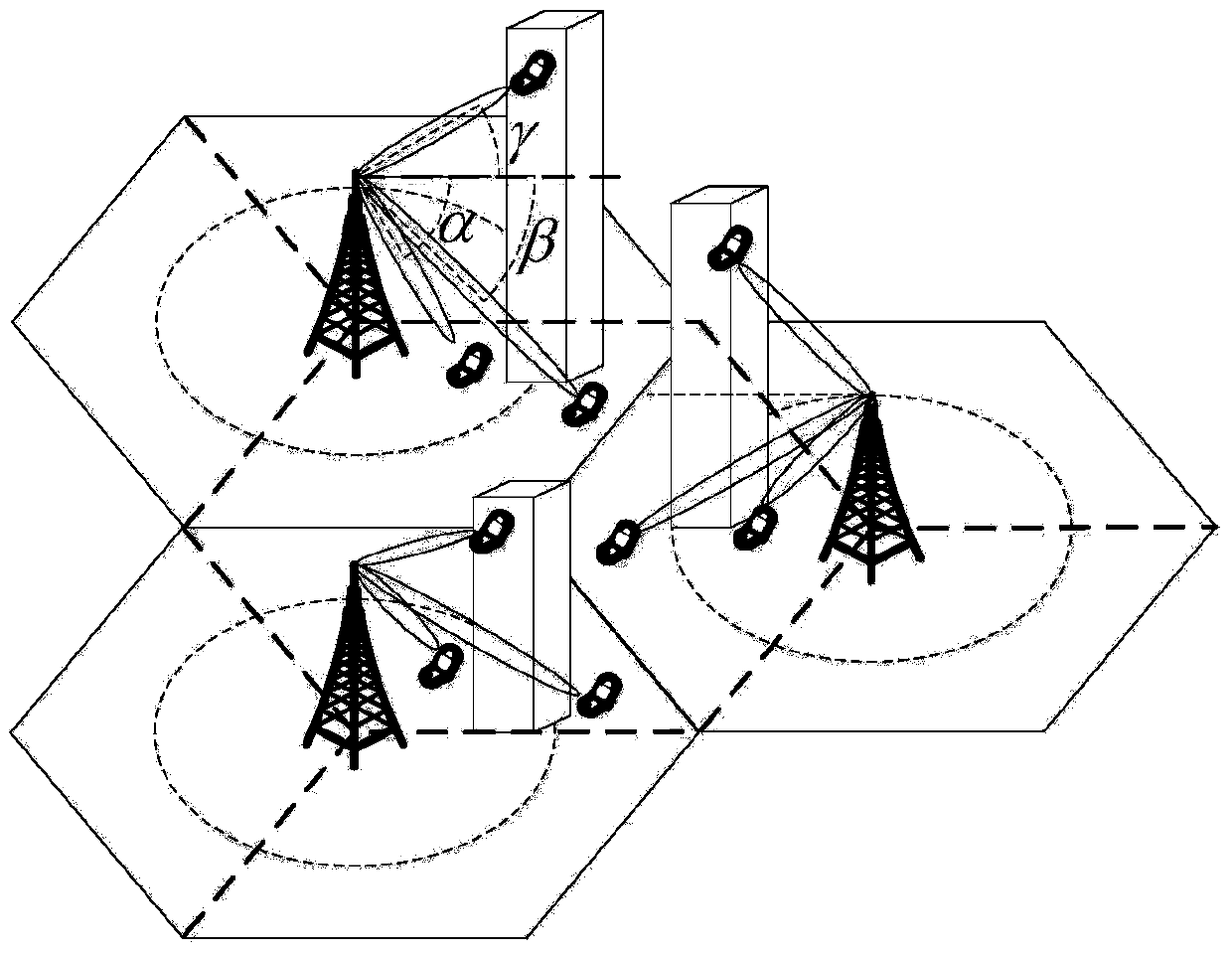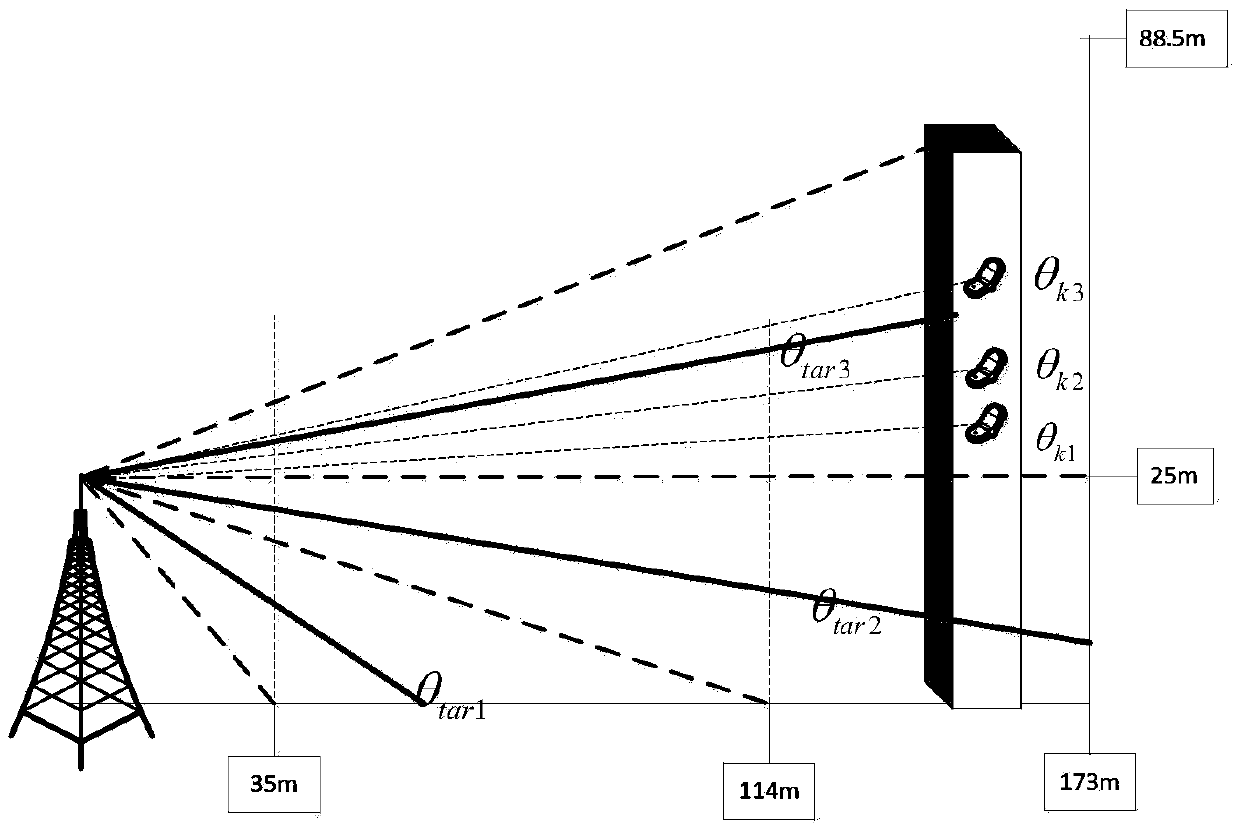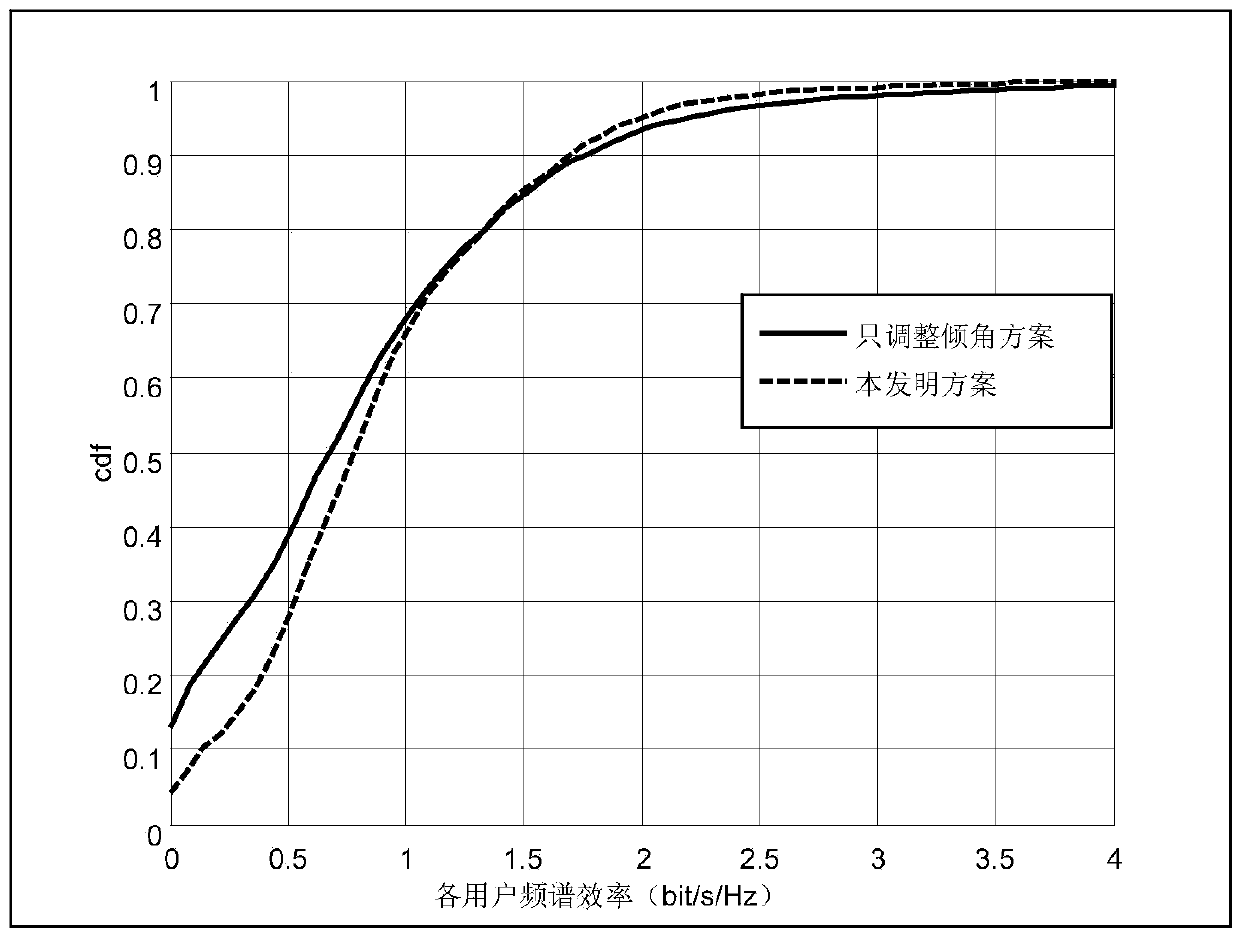Distributed interference coordination method based on beam shape matching in 3D-MIMO system
A 3D-MIMO, 1.3D-MIMO technology, applied in the field of interference coordination scheme, can solve the problems of interference suppression between users, inability to adjust the beam half-power beam width, and poor service quality for edge users.
- Summary
- Abstract
- Description
- Claims
- Application Information
AI Technical Summary
Problems solved by technology
Method used
Image
Examples
Embodiment 1
[0101]Considering the 3D channel scenario of seven cells in a cell cluster, the base station antenna array of each horizontal sector has 12 horizontal antennas and 16 vertical antennas. The precoding algorithm adopts MRT precoding. For other simulation parameters, refer to Table 1.
[0102] Table 1 User 3D distribution scene simulation parameters
[0103]
[0104] Depend on image 3 It can be seen that the proposed scheme can improve the performance of edge users compared with the scheme that only adjusts the inclination angle. This is because the proposed scheme can adjust the beam width and expand the beam coverage, which can effectively improve the service quality of edge users. The user maximum rate of the scheme of the present invention is lower than only adjusting the inclination scheme, and this is by Figure 5 It can be seen that the beam main direction gain of the scheme of the present invention is slightly smaller than that of the scheme of only adjusting the in...
Embodiment 2
[0107] The base station antenna array of each horizontal sector has 12 horizontal antennas and 32 vertical antennas, and the other scene configurations are the same as those in Embodiment 1.
[0108] Such as Figure 6 As shown, as the number of antennas in columns increases, the beams formed by the antennas become narrower, which can serve target users more accurately. Therefore, the maximum spectral efficiency of users increases by about 3 bit / s / Hz compared with the scenario of 16 antennas in columns. In addition, compared with the scenario with 16 antennas in columns, the performance of edge users in the solution of the present invention is slightly improved, because the number of column antennas increases and the beam becomes narrower, and the adjustment of the half-power beam width in this solution improves the overall performance of the service user group It is more effective. Compared with the scheme of only adjusting the tilt angle with a fixed half-power beam width, th...
Embodiment 3
[0110] The precoding algorithm adopts SLNR precoding, and other scene configurations are the same as those in Embodiment 1.
[0111] Such as Figure 8 and Figure 9 As shown, after changing MRT precoding to SLNR precoding, the cdf curve of user spectral efficiency does not change significantly, but the spectral efficiency of a certain level sector of each scheme under each SNR situation is slightly lower than that of MRT precoding.
[0112] System overhead and computational complexity analysis:
[0113] Only the tilt adjustment scheme only needs to know the user's position information, the feedback overhead is small, and the computational complexity of each beam The scheme of the present invention only needs to know the location information of the user, the feedback overhead is very small, and it is a distributed optimization scheme, the optimization process is simple to operate, and the computational complexity of each search is relatively low as O(B 2 N), B is the size o...
PUM
 Login to View More
Login to View More Abstract
Description
Claims
Application Information
 Login to View More
Login to View More - R&D
- Intellectual Property
- Life Sciences
- Materials
- Tech Scout
- Unparalleled Data Quality
- Higher Quality Content
- 60% Fewer Hallucinations
Browse by: Latest US Patents, China's latest patents, Technical Efficacy Thesaurus, Application Domain, Technology Topic, Popular Technical Reports.
© 2025 PatSnap. All rights reserved.Legal|Privacy policy|Modern Slavery Act Transparency Statement|Sitemap|About US| Contact US: help@patsnap.com



